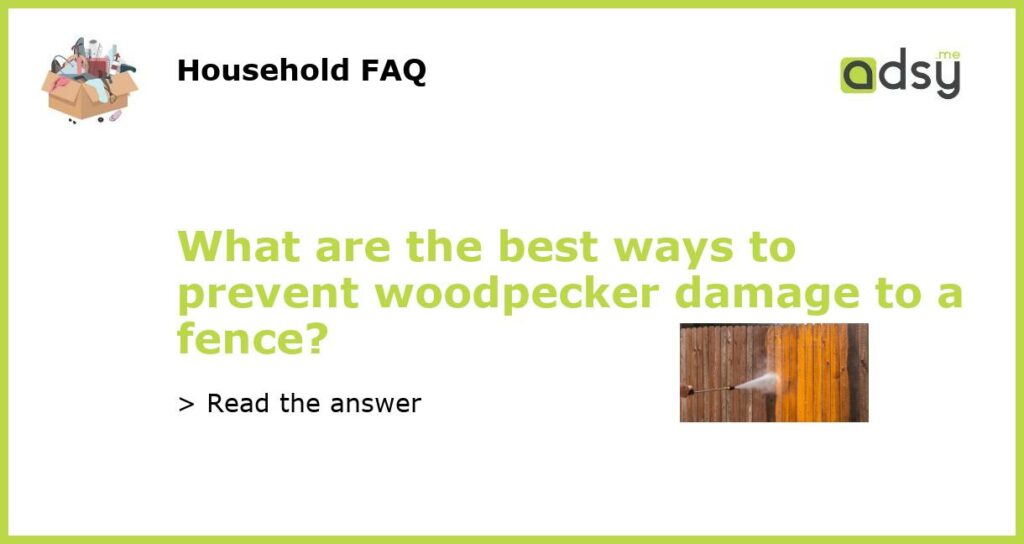Understanding Woodpecker Behavior
Before we delve into the best ways to prevent woodpecker damage to a fence, it is important to understand why these birds peck at wood in the first place. Woodpeckers are attracted to wood surfaces as they search for food, create nests, and establish territories.
They often peck on trees to feed on insects or to create nesting cavities. The same behavior can extend to wooden fences, as they mistake them for trees or see them as a potential nesting site. Therefore, it is crucial to consider their behavior when implementing preventive measures.
Visual Deterrents
One effective way to prevent woodpecker damage to a fence is by using visual deterrents. These are designed to fool or scare off the birds, making the area less appealing for them to peck. There are several visual deterrents available in the market, such as reflective tape or bird scare balloons.
The reflective tape, often silver or metallic, creates flashes of light that can confuse and scare woodpeckers away. Bird scare balloons, on the other hand, mimic the appearance of predators and can deter the birds from approaching your fence. It is important to regularly move or change the position of these deterrents to maintain their effectiveness.
Auditory Deterrents
In addition to visual deterrents, auditory deterrents can also be effective in preventing woodpecker damage to a fence. Woodpeckers are sensitive to sounds and may be deterred by certain noises. There are products available, such as ultrasonic devices or bird distress calls, that emit sounds that are unpleasant to woodpeckers.
Ultrasonic devices emit high-frequency noises that are inaudible to humans but can disturb woodpeckers. Bird distress calls imitate the sounds made by distressed or aggressive woodpeckers, signaling to other woodpeckers that the area is occupied or unsafe.
Physical Barriers
Installing physical barriers can also prevent woodpecker damage to a fence. One effective method is to attach a netting or mesh over the surface of the fence. The netting or mesh should have small enough gaps to prevent the birds from accessing the wood. This method not only deters woodpeckers but also protects the fence from other potential damage.
Another option is to install a PVC or metal sheathing over the area of the fence that is prone to woodpecker pecking. This provides a durable and unattractive surface for woodpeckers to peck on, thus protecting the underlying wood. It is important to ensure that the sheathing is properly secured and covers the vulnerable areas.
Environmental Modifications
Modifying the environment around the fence can also discourage woodpecker activity. One way to do this is by eliminating or minimizing potential food sources for the birds. Remove dead trees, fallen logs, or other decaying wood that may attract insects, which in turn attract woodpeckers.
Additionally, consider planting bird-friendly shrubs or trees in the vicinity of the fence. These can provide alternative nesting sites or food sources for woodpeckers, diverting their attention away from the fence. It is important to ensure that the chosen plants are appropriate for your region and do not pose any hazards to the fence or surrounding area.

